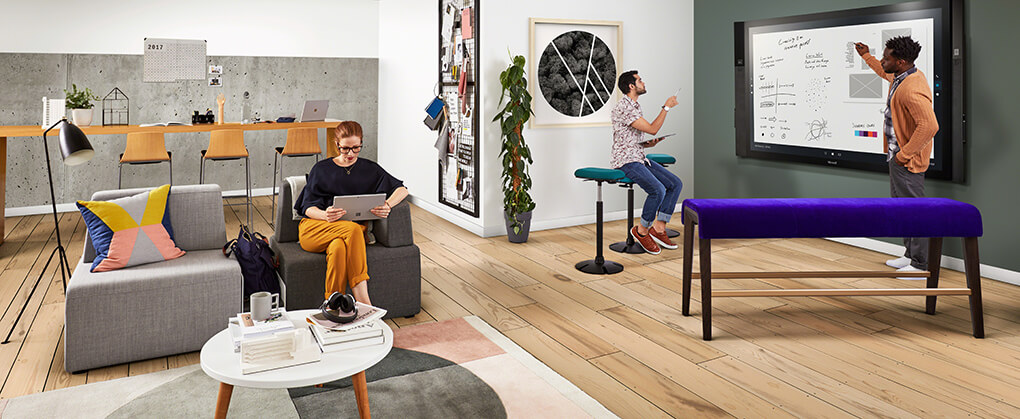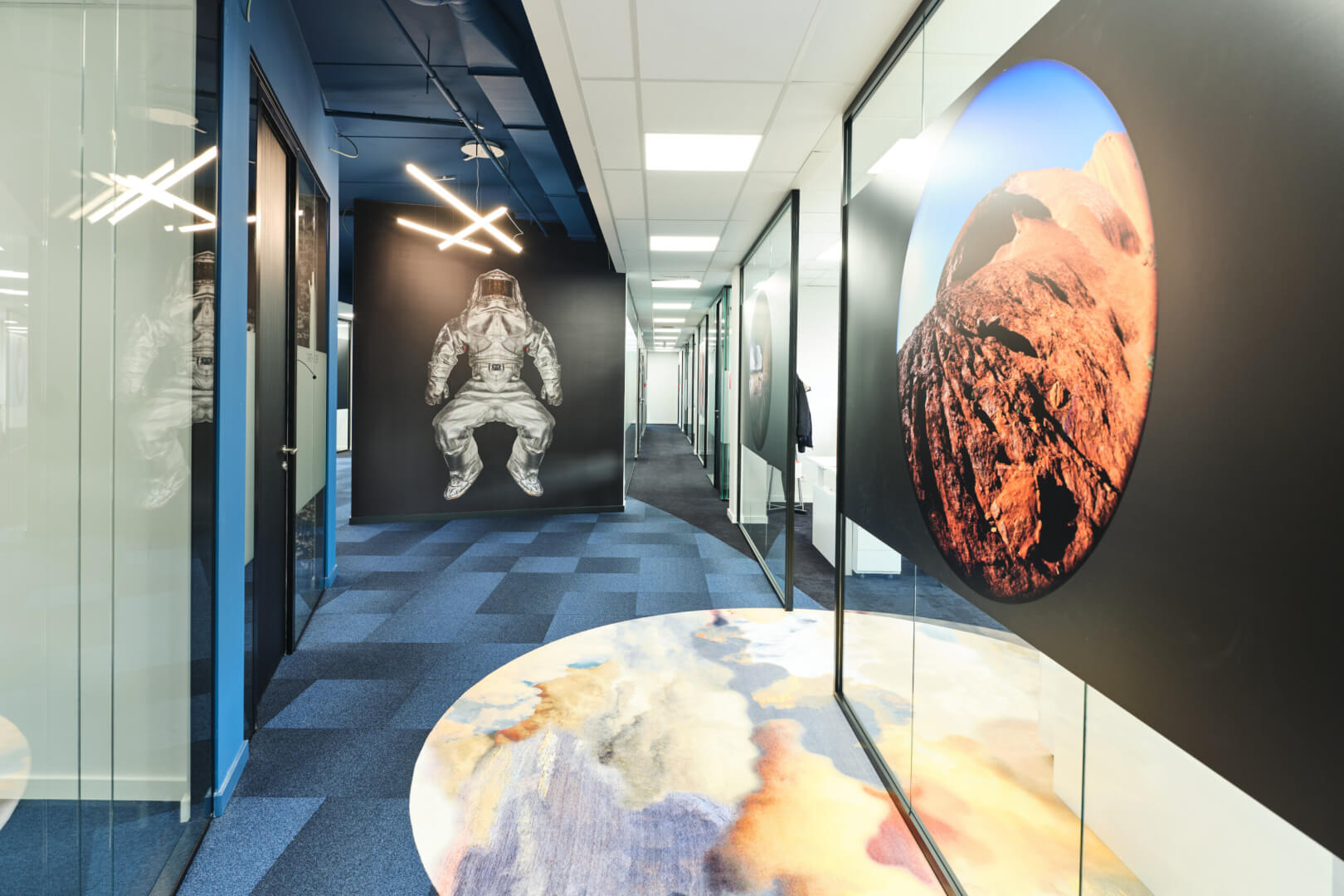
Laurence Moisse
Head of Design
Alternativ Workspace Solutions
INTERVIEW I ASK THE EXPERT
What trends for our workspaces in 2024?
The workspace is evolving rapidly to meet the needs of employees and promote productivity, well-being, and innovation. For the year 2024, several trends are emerging, reflecting a more holistic approach to the design of the work environment.
Laurence Moisse, Head of Design at Alternativ, has compiled the key points that will influence the future of corporate offices.
1. Sustainability: In materials and in thinking
Sustainability remains a major concern in 2024, both in the choice of materials and in the overall vision of design. There is an increasing preference for recycled materials, eco-friendly manufacturing processes, and products and concepts focused on longevity.
For example, materials such as Terrazzo granite, recycled plastic, or recycled fabrics for workplace seating are becoming popular. Sustainability also extends to waste management and reducing the carbon footprint of workspaces. Alternativ, for instance, increasingly offers refurbished furniture in its projects.
When furniture is too worn and damaged, it can be integrated into a recycling program such as Eco’Services by Steelcase, ensuring the transformation of all materials in the fleet. This goes beyond a mere trend; it’s a guiding principle that should inform our choices to create a more sustainable world.
2. SMART OFFICE : Audiovisual and technological integration
Smart offices contribute to creating more connected environments tailored to individual needs, offering each employee a personalized work experience. What we may not necessarily think about is that, thanks to this technology, we can collect data related to space usage. Which meeting rooms are reserved most frequently? Which desks are used the most? Are there usage variations during the week? What about parking spaces? All this data enables a continuous improvement approach to workspace and decision-making based on concrete information in favor of your teams.
3. Inclusive design : Reflecting on space design
Inclusivity becomes a priority in the design of workspaces. Gone are the days when we started from the needs of the majority to create a general and standardized experience. Now we see a reflection that considers each individual need and aptitude. In short, the goal is to create a work environment that allows all employees to feel comfortable and collaborate on an equal footing.
This translates into the adapted layout of offices, such as adjustable-height furniture to meet the needs of each employee. Adjustable desks and chairs allow people of different sizes and physical abilities to find a comfortable configuration. Another significant example is generational diversity. We increasingly witness demands from companies that want to encourage intergenerational collaboration, taking into account the preferences and specific needs of each age group.
In short, do the maximum to create a harmonious environment where everyone feels welcome.
4. Health : Mental and physical
Health, both mental and physical, remains at the heart of concerns regarding workspace desing. Environments are designed to envourage well-being, with dedicated area for physical activity, such as a yoga room, or adjusted schedules to promote physical activity or balance between professional and personal life. Ergonomics and attention to comfort are also very important to prevent health problems related to improper posture.
5. Human intelligence combined with artificial intelligence
In 2024, the collaboration between human intelligence and artificial intelligence becomes a powerful lever to optimize workspace management. Artificial intelligence systems can analyze real-time space usage, workflows, and employee habits. These valuable data allow adjusting space configurations, optimizing resource allocation, and even proposing spatial reorganizations based on more efficient usage.
Whether by reducing unused space or identifying opportunities for team clustering for better collaboration, AI becomes an essential partner in strategic decision-making related to the physical management of the professional environment.
In summary, human and artificial intelligence converge to create more efficient, flexible, and future-oriented work environments.
Conclusion
The year 2024 outlines a future where work environments are sustainable, inclusive, health-oriented, and intelligently leverage synergies between human and artificial intelligence to create flexible, efficient spaces adapted to the constant changes in the professional world. We are eager to witness these changes.
Do you need help in rethinking your work environment ? We can help you




